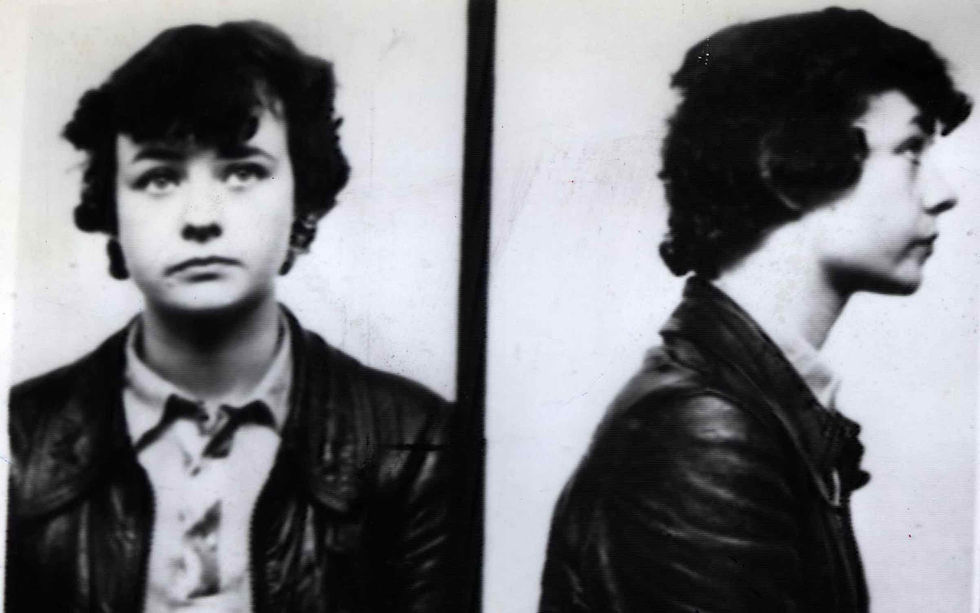Content Warning: This piece contains descriptions of attempted murder, assault, violence towards a child, and mental illness. Please read with caution.
Get ready boys and girls, this one is a long, somewhat convoluted, and deeply fascinating case.
I’ve always been interested in how a child’s mind approaches the concept of violence and pain. As an aunt myself with eight nieces and nephews, I have had plenty of experience observing how they interact with each other, their friends, and even their parents. There’s usually a moment in their life where they discover pain, the things that cause pain, and how pain can be avoided. When a child smacks a parent during play, with no ill intention behind it, they will naturally get gently scolded with a “Ow, that hurt!” Then the child has the realization: I should not do this thing because it hurts others.
While that process itself is fascinating, you should probably expect that that’s not the part I’m interested in. I mean, come on. This is a crime blog. What I’m interested in is the other end of that spectrum, where a child wonders how pain can be used as a tool. Of course, that train of thought can be benign; ‘I’m mad at my sister so I’m going to hit her’. But what happens when it becomes much more sinister?
On May 31st, 2014, Greg Steinberg was biking through David’s Park in Waukesha, Wisconsin, when he came across a girl lying in a grass clearing. He cautiously approached, and when he realized that the young girl was covered in blood, he called the police. That girl was 12-year-old Payton Leutner, and she had just been brutally attacked by two other girls that she believed to be her friends.
The night before Payton, along with classmates Morgan Geyser and Anissa Weier, were celebrating Morgan’s birthday at her home. They had spent the night at the local roller rink and had eaten frozen yogurt before concluding with a sleep-over. The next morning when they woke up, Morgan informed her mother that they were going to walk to the local park to explore.
Morgan and Anissa then lured Payton into the woods at David’s Park and began a game of “hide and seek”. The two girls encouraged Payton to lie on the ground and cover herself in leaves and sticks. Payton heard one of them say “Go ballistic”, and then Morgan jumped onto her and began stabbing her with a kitchen knife that she had taken from her home. As Payton struggled, Morgan told her “Don’t be afraid, I’m only a little kitty cat.”

After Morgan and Anissa left, Payton realized that no one would find her in time in the middle of the woods, so she began to crawl, finally making it to the clearing where Greg Steinberg found her.
Authorities were at a loss once the investigation began. Where were Payton’s two other friends, and is it even possible that they would do something like this to her? They began to contact the girls’ parents. Anissa’s mother found a cell phone with a “good-bye” note from Anissa, indicating that they had run away. That prompted the police to begin an air and ground search for the missing girls. Five hours later, Anissa and Morgan were found sitting on the side of the I-94 freeway. In interrogation the girls were “meek”, per a detective — Anissa seemed more scared while Morgan seemed more nonchalant — but they were read their Miranda rights. In Wisconsin, a child can legally be interrogated without a parent or guardian present, and the detectives weren’t expecting anything too outlandish anyway. Maybe this was about a boy, they thought. Instead, the girls revealed their motivation to be much more sinister: a mysterious being called Slenderman.
If we rewind, we can assume based off interviews that this crime began with a somewhat tenuous friendship. Payton and Morgan were good friends in school, best friends even, and spent a lot of time together. We’ve all been preteens though and have firsthand experience as to how hard it can be, so as Payton continued to thrive in the school environment, Morgan began to have difficulty. Morgan’s mom describes her as a happy child, but she began to endure bullying and became moodier. During this time, she met and befriended Anissa. Anissa’s mother told ABC that while Anissa didn’t make friends easily, she rarely talked about bad things in the first place.

Payton noticed Morgan’s mood change. To her Morgan seemed a little lonely and controlling, but Payton just went with it due to her being one of Morgan’s only friends. When Anissa joined the trio Payton noticed that Anissa was always cruel to her, and seemed to be jealous that Morgan was also friends with Payton.
As Morgan and Anissa got to know each other more they began to develop mutual interests, namely Slenderman. Anissa was the one who first brought him up, Morgan told investigators, specifically saying that Anissa “knew him”.
Those of us who grew up in the age of the internet and creepypastas also know Slenderman. I remember hearing about him in grade school and middle school and being terrified of the strange pictures that were supposed proof that he existed; they were typically pictures of parks or school yards with children who were said to have disappeared later, and the figure of Slenderman could be seen in the background; Tall with elongated limbs, pale white, wearing a dark suit, and no discernable features on his face. The whole thing seemed to be shrouded in mystery, when in actuality Slenderman’s beginning is easier to discern. The figure came from a 2009 photoshop contest hosted by a forum called “Something Awful”, and the contest guidelines called for convincing supernatural photo edits. Two photos were submitted by Eric Knudsen, accompanied by some supplementary text to make them seem more authentic, and the internet phenomenon of Slenderman was born.
Once Slenderman made his way around the internet, Anissa and Morgan came across the Creepypasta Wiki forum posts going into detail about his supposed “history”. People online only added to his mythology and created deceptively real looking articles and forum posts explaining the legend.
The girls eventually became obsessed with the legend and filled notebooks with drawings and writings about him. Morgan found out that Slenderman supposedly had a mansion in the woods at Nicolet National Park. The girls wanted to meet Slenderman, but felt they had to prove themselves. It was Morgan who came up with the idea that if they killed someone, Slenderman would let them come live in his mansion.
Payton, they told detectives, was the most accessible victim.
Anissa and Morgan planned the murder for six months and used codewords when talking about it as to not alert others around them. The night of the sleepover their original plan was to kill Payton during the night, however they decided to postpone. Morgan told investigators that she “wanted to give [Payton] at least one more morning”. The next plan was to go to David’s Park and kill Payton in the bathroom where there was a drain for her blood. Thinking better of it, the girls then decided on their final hide-and-seek plan.
Once the girls were brought in and began being interrogated, they told their stories. The detective interviewing Morgan thought that she was deflecting a lot of the blame onto Anissa, using deceptive “I think —” statements rather than being clear and direct, whereas Anissa fully recognized her own part in the attack. Morgan was strongly defensive about who did the stabbing, at one point saying, “How am I supposed to remember that,” and then would switch to a more calm demeanor while stating that she “actually felt nothing” as the crime was committed. When asked if she thought what she did was wrong, she replied “If it were right, I wouldn’t be here.”
Besides describing the crime itself, both Morgan and Anissa asked where Payton’s “body” was, probably assuming that she was dead. When detectives informed them that Payton was at the hospital, they were shocked that she was still alive.
Police investigated further into Morgan and Anissa’s background and discovered the obsession with Slenderman, and research they had done prior to the attack. Morgan had lots of notebooks and drawings of Slenderman in her locker at school, Anissa had one. Morgan was also found to be in possession of mutilated dolls. Anissa had instructed Morgan to clear her browser history after Morgan had looked up crimes, police investigation tactics, jails, interrogation tactics, and mental illness.
When looking more into Morgan’s mental health investigators discovered that she was guided by voices that ordered her to kill someone. She also talked to fictional characters; however she was worried that if she took medication then she wouldn’t be able to talk with them anymore. Morgan was then diagnosed with schizophrenia.
Both girls were charged with attempted first-degree homicide however those charges were lessened as the trial progressed. They continued to be tried as adults. In court in 2017 Anissa pled guilty to being party to attempted second degree homicide and cut a deal. Her lawyers argued that Anissa was mentally unwell due in part to folie a deux, a condition where two people share the same delusion, and that Morgan was the one who had carried out the actual attack. Three doctors agreed with this claim about Anissa’s mental health, and she was found not guilty by reason of mental defect and sentenced to 25 years to life in which she would have three years of locked confinement and treatment and then followed by communal supervision until the age of 37.

Morgan accepted a plea deal where she would not go to trial and would instead be evaluated by doctors to see how long she should be treated at a mental facility. Once this evaluation was completed, she was sentenced to 40 years to life with similar conditions to Anissa’s sentencing, however in 2018 a judge changed her sentence to 40 years to life at a mental institution. She was found delusional because of schizophrenia and psychotic spectrum disorder. Two doctors had testified to the court that she had no more psychotic symptoms, and one other doctor said that Morgan had been hearing voices as early as 2017 and was thus deemed to still be a danger to society. Morgan and her lawyers can petition for her release every six months, and in 2020 an appeals court rejected their petition for Morgan to be retried as a juvenile. Her lawyers believe that she should have been tried for second degree intentional homicide in a youth court. They say that Morgan believed that Slenderman would hurt her family if she didn’t kill someone. If she had been tried in a youth court she would have been sentenced to a maximum of three years and then observed until she was 18.
It is very rare for young girls to commit murder. In 2012 of the 8,514 people arrested for murder and nonnegligent homicide, only one was a girl under the age of 13. In 2018 one girl was under 13, and 92 were under 18. When girls do commit murder, the public tries to find reasoning behind their actions. However, as best said by Abigail Jones for Newsweek, “… when girls do kill, their crimes often devolve into sensationalized pop culture narratives, replete with simplistic explanations and groundless moralizing.” While girls are less likely to engage in physical violence, girls are historically more likely to participate in bullying, gossip, and manipulation.
There are few cases in recent history of young girls committing murder. In 1954, Pauline Parker, 16, and Juliet Hulme, 15, killed Parker’s mother while living in New Zealand. In 1968, 11-year-old Mary Bell killed a 4-year-old and a 3-year-old boy. In 1986, Paula Cooper, 16, killed 78-year-old Ruthe Pelke by stabbing her 33 times during a robbery. In July 2012, Shelia Eddy and Rachel Shoaf, both 16, killed their best friend Skylar Neese by stabbing her to death in the woods in West Virginia. Shoaf later confessed in December after being admitted to a psychiatric hospital for a nervous breakdown. She told authorities “We just didn’t like her.”

No matter their gender, what many courts seem to fail to consider during convictions is a child’s critical thinking ability. The prefrontal cortex — the part of the brain in charge of critical thinking, judgement, and deliberation, is not fully developed until the mid-20’s. This by no means excuses excessively violent behavior of children, rather emphasizes the fact that child offenders need professional mental health care rather than excessive prison sentences. It is our duty as a society to help these children be rehabilitated to the furthest extent that they can be, because kids with long sentences may come out worse than when they went in.
Sources:





Comments